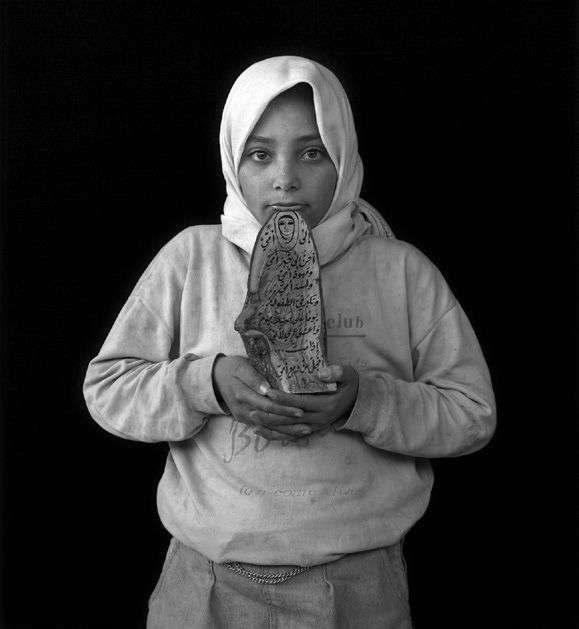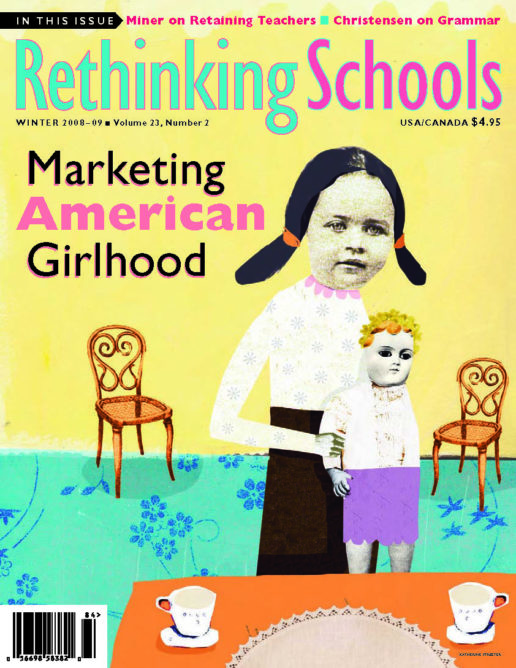Remembering Mahmoud Darwish
Illustrator: Michael Nye

A Palestinian refugee and her poem.
When I included the poem “The Prison Cell” in my first anthology of poems for young readers, This Same Sky (Four Winds Press, Macmillan, 1992), I had not yet met the poet Mahmoud Darwish, but had been reading his poems in English translation since I was a teenager. It would surprise me, in years following the appearance of my first anthology, how many U.S. teachers (in high schools particularly, but also middle schools) would ask me to read this particular poem out loud during my presentations. Somehow, Darwish’s simple, strong poem “The Prison Cell” had the power to encourage people to sit up straighter, take note — and discuss or contemplate issues of injustice, as they recognized them. Latino students in Santa Fe, for instance, seemed profoundly moved by the poem and the possibilities of reclamation and enduring power it suggests.
Darwish, beloved as the beacon-voice of Palestinians scattered around the globe, had an uncanny ability to create unforgettable, richly descriptive poems, songs of homesick longing which resonate with displaced people everywhere.
It would have stunned me to imagine that I would stand next to him on stage, along with the poet Carolyn Forche, reading his poems in English after he read them in Arabic at an event some years ago at Swarthmore College, when he received the Cultural Freedom Award given by the Lannan Foundation. He spoke English well enough to have read his own translations, but did not want to.
It would have stunned me even more that he would die prematurely in August of 2008, at the age of 67, after heart surgery, in a Houston hospital in my own adopted state. I had awakened the day he was put on life support, feeling intensely that someone very precious was getting ready to pass out of the world. I nervously mentioned this to my husband a full day before we learned it was true. Perhaps someone very precious is getting ready to pass out of this world every minute.
Now we are left to encourage one another to read Darwish, and to believe in the quest for justice, which he, and so many other homesick Palestinians, never abandoned.
A little Darwish tale worth telling: My husband, photographer Michael Nye, once photographed in a West Bank Palestinian refugee camp for days, and was followed around by a little girl who wanted him to photograph her. Finally, he did — and she held up a stone with a poem etched into it. (This picture appears on the cover of my collection of poems, 19 Varieties of Gazelle — Poems of the Middle East.) Through a translator, Michael understood that the poem was “her poem” — that’s what she called it. We urged my dad to translate the verse, which sounded vaguely familiar, but without checking roundly enough, we quoted the translation on the book flap and said she had written the verse. Quickly, angry scholars wrote to me pointing out that the verse was from a famous Darwish poem. I felt terrible.
I was meeting him for the first and last time the next week. Handing over the copy of the book sheepishly, I said, “Please forgive our mistake. If this book ever gets reprinted, I promise we will give the proper credit for the verse.” He stared closely at the picture. Tears ran down his cheeks. “Don’t correct it,” he said. “It is the goal of my life to write poems that are claimed by children.”

